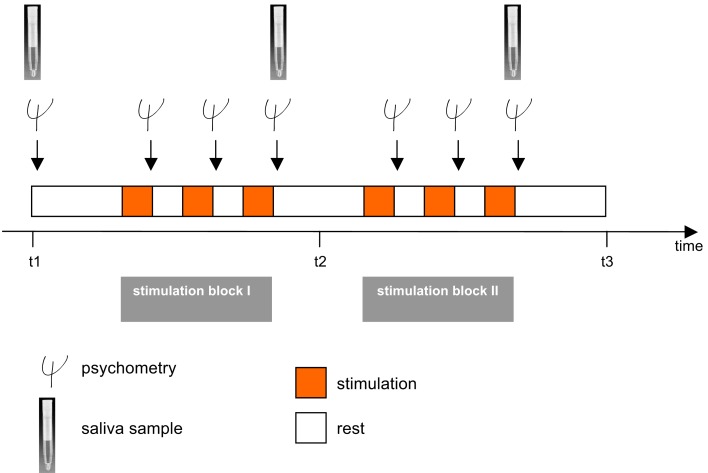Figure 2.
The experimental paradigm. The investigation consisted of two sessions including an experimental and a control/sham condition. In a cross-over design subjects were randomly assigned to both conditions. A session included two stimulation blocks each lasting 540 s, one with three rotational stimulations (yaw, pitch, roll) and one with translational vestibular stimulations (surge, heave, sway) which were performed on a hexapod. Translational and rotational stimulation blocks were also randomized, as were all forms of vestibular stimulation within the rotational and translational stimulation blocks. After each stimulation (100 s), there was a break of 120 s during which subjects had to immediately estimate their mood states. Between the two stimulation blocks there was a break of 300 s. Psychometric assessment was conducted before and after each vestibular stimulation. Saliva samples for assessment of cortisol and α-amylase were administered before (t1), between the two stimulation blocks (t2), and after the entire stimulation (t3). A detailed description is given in the methods section.

